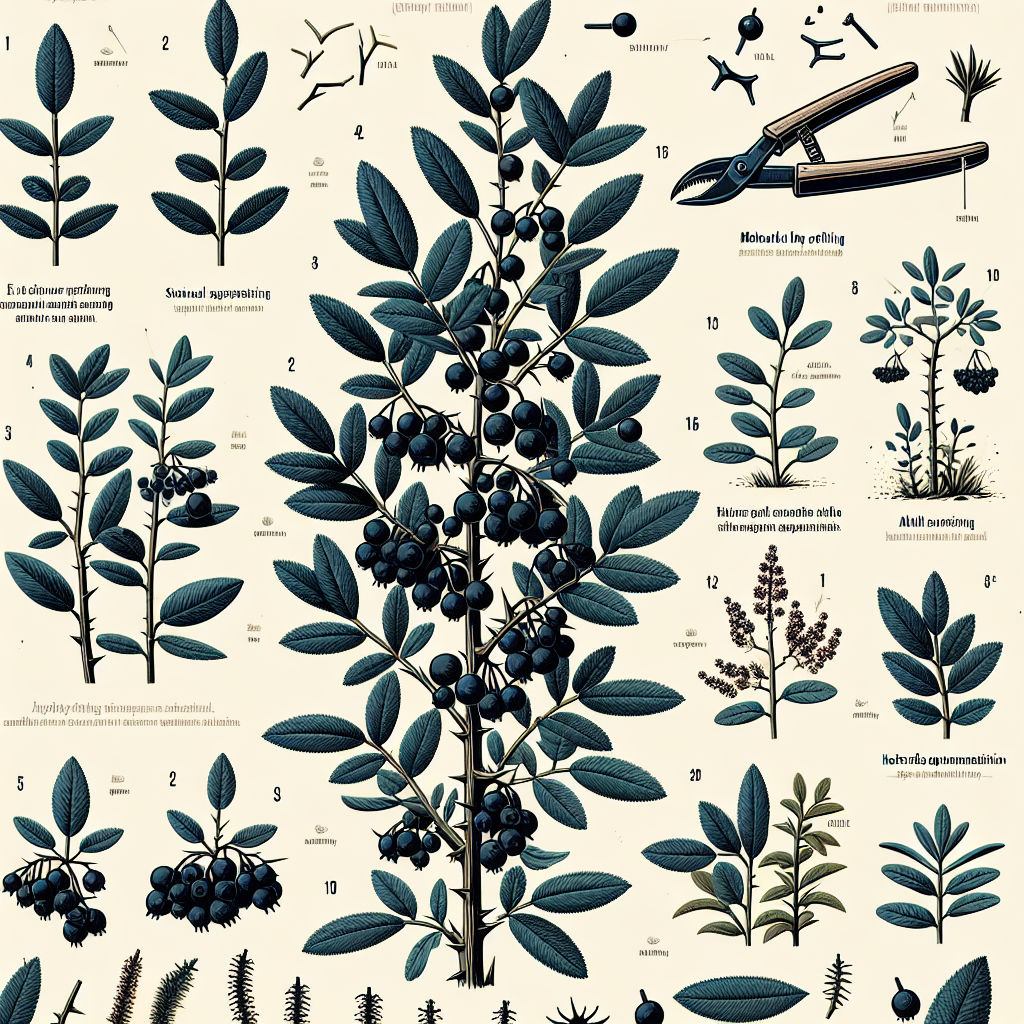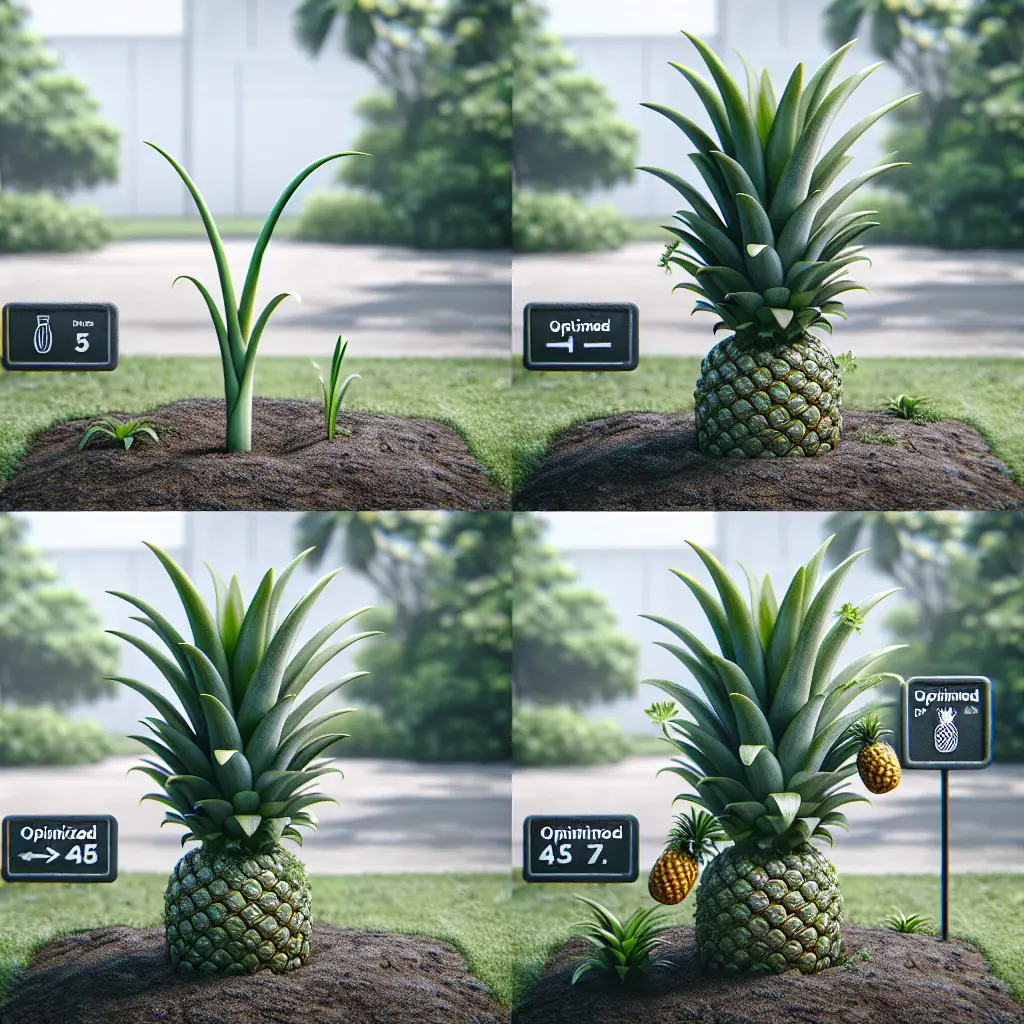Nurturing Jackfruit Trees for Maximum Yield
Updated April 16, 2024 at 8:59 am

Getting Started with Jackfruit Trees: Essential Overview for Optimal Growth
- Pet Friendly: Jackfruit trees are generally safe for pets, but the tree sap can be sticky and may irritate their skin.
- Light Requirements: These tropical trees thrive in full sun, requiring at least 6 hours of direct sunlight daily.
- Watering: Water young trees generously but infrequently, allowing the soil to dry between waterings to promote deep root growth.
- Humidity: Jackfruit trees prefer high humidity but can tolerate less humid environments if properly cared for.
- Temperature: Thriving in temperatures between 60°F to 95°F (15°C to 35°C), they’re not frost-tolerant and need protection from cold.
- Difficulty: With proper care and a suitable climate, growing a jackfruit tree is moderately challenging but highly rewarding.
What kind of soil is best for jackfruit trees?
Jackfruit trees flourish in rich, deep, and somewhat porous soil. The ideal pH range for their growth is between 6.0 to 7.5. Getting the soil right is pivotal for the health of the tree and the size of the harvest. Here’s what you should know about soil:
If you’re looking to amend your soil, I’ve found that FoxFarm Ocean Forest Potting Soil is a great option. This soil mix is designed to provide optimal conditions for tree growth, packed with earthworm castings, bat guano, and sea-going fish meal. Reviews often highlight its balanced nutrition and great drainage capabilities, which are exactly what jackfruit trees need.
Find This and More on Amazon
How often should jackfruit trees be watered?
Watering frequency for jackfruit trees will vary depending on their stage of growth and the climate. Generally, young trees should be watered thoroughly once every 2-3 days to help them establish. Mature trees can be watered less frequently, as their deep root systems reach water sources underground.
It’s said that people often make the mistake of over-watering, which can lead to root rot. A moisture meter can take the guesswork out of this task. I’ve seen lots of praise for the XLUX Soil Moisture Meter among gardeners for its simplicity and accuracy. It does not require batteries and gives an instant read on the moisture level, helping you water your jackfruit tree just right.
Find This and More on Amazon
Pruning and Training Jackfruit Trees
Pruning is critical in managing a jackfruit tree’s size and shape and encouraging productive growth. The best time to prune is during the dry season, when the tree is less vulnerable to disease. Aim to remove dead or diseased wood and to thin out dense areas of the canopy to let light and air in.
For this task, it’s important to have the right tools. The Felco F-2 Classic Manual Hand Pruner is a favorite among gardeners for its durable construction and precise cuts. It’s said that these pruners make quick work of tough branches without straining your hand, and replacement parts are readily available, which could help in keeping them in top condition for years to come.
Find This and More on Amazon
Maximizing Fruit Production: Fertilizing and Nutrient Requirements
Jackfruit trees are heavy feeders and require regular fertilizing to produce a bountiful yield. Utilizing a balanced fertilizer with an even NPK ratio, such as 20-20-20, can provide the macro-nutrients needed for robust growth. These granular or liquid supplements should be applied every 3-4 months during the growing season.
It’s said that Dr. Earth Organic 5 Tomato, Vegetable & Herb Fertilizer garners favorable reviews for its effectiveness on fruit trees, including jackfruit. This fertilizer not only feeds the plants but also enriches the soil with beneficial soil microbes, which can improve the overall health of your jackfruit tree and increase fruit production.
Find This and More on Amazon
Pest and Disease Management for Healthy Jackfruit Trees
Like any plant, jackfruit trees can fall victim to pests and diseases. Common pests include jackfruit borers, fruit flies, and scale insects. Regular inspections of the foliage and fruit can help you spot and address issues early before they become major problems.
Natural and organic pest control methods are preferable, like neem oil, which has been lauded for its effectiveness against a wide range of garden pests. Neem oil acts as an anti-feedant, growth regulator, and repellent, disrupting the life cycle of pests without harming beneficial insects or the environment.
Find This and More on Amazon
The Impact of Climate and Protecting Jackfruit Trees from Weather Extremes
Jackfruit trees originate from tropical climates, and extreme weather conditions can dramatically affect their growth and fruit production. Sudden cold snaps or prolonged droughts can be particularly harmful. Mulching can help regulate soil temperature and maintain moisture levels.
For mulching, applying a natural mulch like wood chips or straw not only helps protect the tree’s root system but also contributes organic matter as it decomposes. Regular monitoring and adjustment to your care routine to adapt to the current weather conditions are crucial for the trees’ longevity and fruiting success.
Understanding the Harvesting and Storage of Jackfruits
Knowing when to harvest jackfruit is key – they should be picked when the bumps on the skin have swollen and the fruit emits a strong, fruity scent. A mature jackfruit can weigh anywhere from 10 to 100 pounds, so it’s essential to handle them carefully to avoid injury or damage to the fruit.
Post-harvest, storing jackfruit correctly can prolong their shelf life. Unripe jackfruits can be left to ripen at room temperature, while ripe ones can be stored in the refrigerator. Make sure to use proper containers or wraps to prevent the strong odor from affecting other produce.
Long-Term Care and Maintenance for a Thriving Jackfruit Orchard
Maintaining a jackfruit orchard over the years requires patience and consistent care. Orchards should be kept clear of weeds, and the soil fertility should be managed with regular amendments. It’s also important to ensure trees are spaced adequately to allow for sunlight and airflow, reducing the risk of disease.
Implementing an integrated management approach that combines soil health, watering, proper pruning, and pest control is the key to a sustainable and productive jackfruit orchard. With time and dedication, these majestic trees can bear fruit for many years, becoming a centerpiece of your garden or homestead.
Connecting with Fellow Jackfruit Enthusiasts and Experts
Joining a community of jackfruit tree growers can be immensely helpful, whether you’re a beginner or an experienced cultivator. Local gardening clubs, online forums, and social media groups are great places to share tips, ask questions, and learn from others’ experiences.
Remember that the journey of nurturing a jackfruit tree is as rewarding as the fruit it yields. Enjoying the process and celebrating each milestone in your tree’s life will make the experience all the more fulfilling. Good luck on your jackfruit growing adventures!
Choosing the Right Location and Planting Jackfruit Trees Correctly
Selecting an optimal location is crucial for your jackfruit tree’s success. The tree needs a spot that gets plenty of sunlight and is sheltered from strong winds. It’s also important to consider the space required; jackfruit trees can grow very large, so they need room to expand.
When planting, make sure to dig a hole large enough to accommodate the root ball comfortably. It should be placed at the same depth it was grown in the nursery. A good tip is to add compost or well-rotted manure to the planting hole to give your jackfruit tree an excellent start.
How to Recognize Common Nutrient Deficiencies in Jackfruit Trees
Jackfruit trees showing signs of nutrient deficiency may exhibit yellowing leaves, stunted growth, or poor fruiting. Nitrogen deficiency, for example, could result in older leaves turning light green or yellow. A balanced approach to fertilization can prevent such problems.
It is beneficial to get a soil test done occasionally to monitor nutrient levels. Based on the results, you might need specific supplements like magnesium or iron if your tree shows related deficiency symptoms. Always follow the recommended rates to avoid over-fertilization.
Incorporating Organic Practices in Jackfruit Tree Care
Choosing organic methods for your jackfruit orchard supports sustainable practices and can lead to healthier fruit. This means avoiding synthetic pesticides and fertilizers and opting for natural amendments like compost and organic mulch.
Companion planting can also be advantageous. For instance, planting leguminous plants nearby can naturally enrich the soil with nitrogen, benefiting your jackfruit trees. Organic practices promote a balanced ecosystem and can improve both the quality of your fruit and the health of the soil.
How to Properly Mulch and Water Your Jackfruit Trees
Mulching is integral to conserving moisture in the soil, suppressing weeds, and providing nutrients as it breaks down. Apply a 2-4 inch layer of organic mulch, such as wood chips or straw, around the base of your jackfruit tree, being careful not to pile it against the trunk.
For watering, it’s crucial to keep the soil moist but not waterlogged. After the tree is established, you can reduce watering frequency and rely on the tree’s deep root system. However, during dry spells or drought, supplemental watering may be necessary.
Seasonal Jackfruit Tree Care for Year-Round Health
Jackfruit trees have different needs throughout the seasons. In spring, they may benefit from a boost of nutrient-rich fertilizer to support new growth. Summer brings with it an increased demand for water, especially in hot and dry climates.
In fall, it’s important to prepare the jackfruit tree for cooler temperatures by making sure it’s well-mulched. And in winter, while the tree may be dormant, protect it from frost damage by covering the tree or adding extra mulch around the base for insulation.
When and How to Repot Young Jackfruit Trees
If you’re starting with a young jackfruit tree in a container, you’ll need to repot it as it grows. Signs that your tree is ready for a larger pot include roots growing out of the drainage holes or a slowdown in growth.
When repotting, choose a container several inches larger in diameter than the current one and use fresh potting soil. Be gentle with the roots during the process to minimize stress and give the tree plenty of water to settle in its new home.
Attracting Pollinators and the Importance of Bees for Jackfruit Trees
Pollinators like bees are vital for fruit production on your jackfruit trees. Encouraging bees to your garden can be done by planting a variety of flowering plants that bloom at different times, providing a continuous food source.
Having a diversity of flowers also invites beneficial insects that can help control pests. Avoiding the use of pesticides will protect these pollinators and support a thriving ecosystem in your garden.
Monitoring Jackfruit Tree Growth and Setting Realistic Expectations
It’s important to remember that jackfruit trees take time to mature and bear fruit – typically four to five years if grown from seed. Monitoring growth annually can help you track your tree’s progress and adjust care as needed.
Be patient and realistic in your expectations for fruit production. With optimal conditions and proper care, your jackfruit tree can produce fruit for many years, but this is a long-term investment in your garden.
Exploring Varieties of Jackfruit and Choosing the Best for Your Region
There are many varieties of jackfruit, each with distinct qualities like size, flavor, and texture. Research the types that are well-suited to your climate and taste preferences. Some may be more resistant to local pests or diseases, which can be a significant advantage.
Contacting local agricultural extensions or nurseries can provide invaluable information on the best varieties for your area. Experience from local growers is often the best guide when selecting which type of jackfruit tree to plant.
Final Thoughts on Nurturing Jackfruit Trees for Maximum Yield
Successfully growing jackfruit trees for maximum yield involves a combination of the right soil conditions, consistent and appropriate watering, judicious pruning, timely fertilization, and vigilant pest management.
Remember to be patient and attentive to the needs of your jackfruit trees. The time and effort invested in these tropical wonders can yield not only delicious fruits but the satisfaction of nurturing a fruitful garden. Embrace the journey, share in the joy of growth, and reap the rewards of your dedication to your jackfruit trees.
Shop more on Amazon

